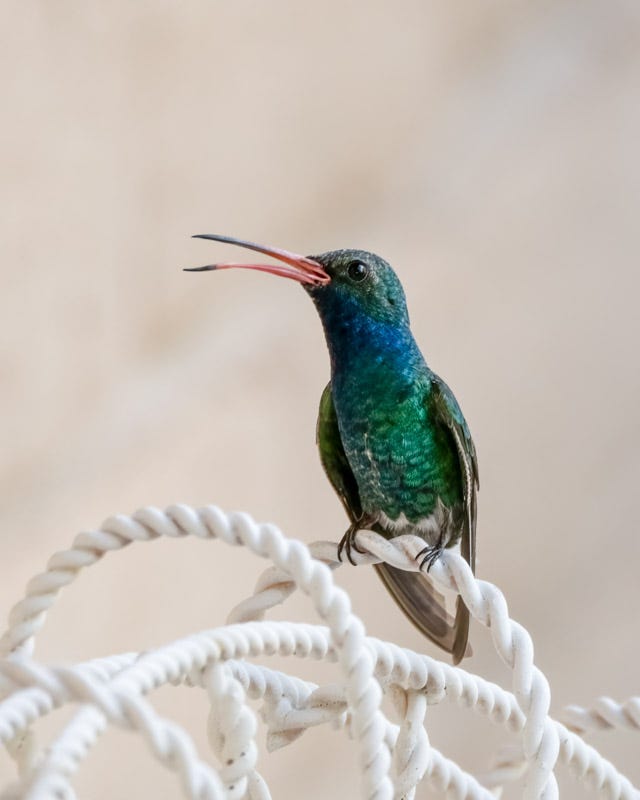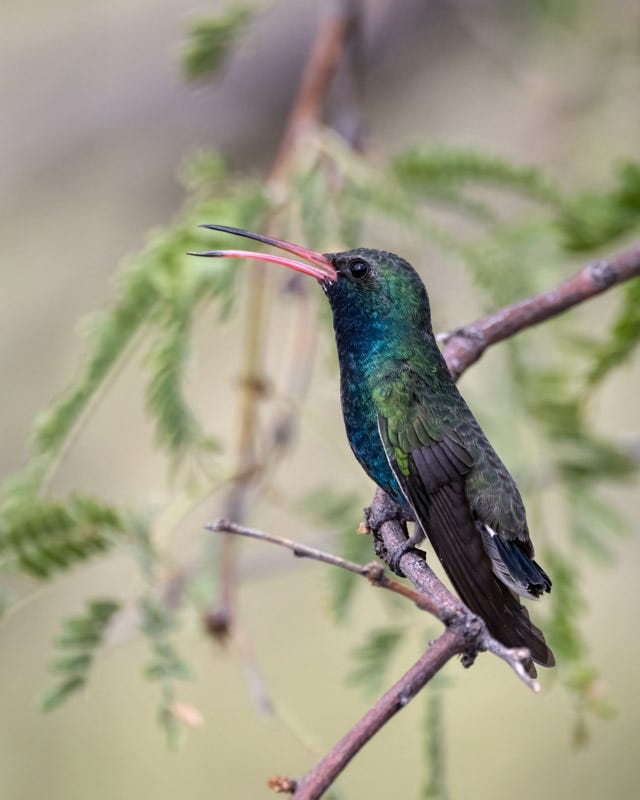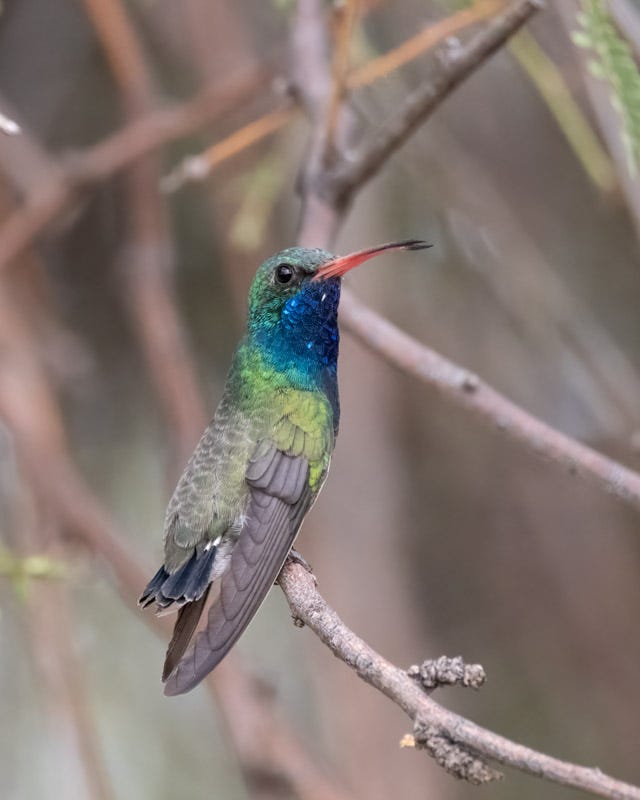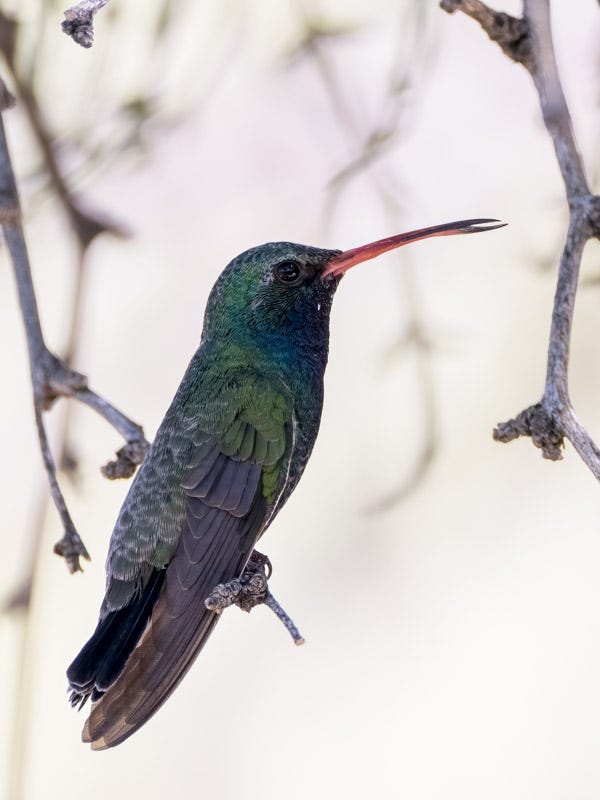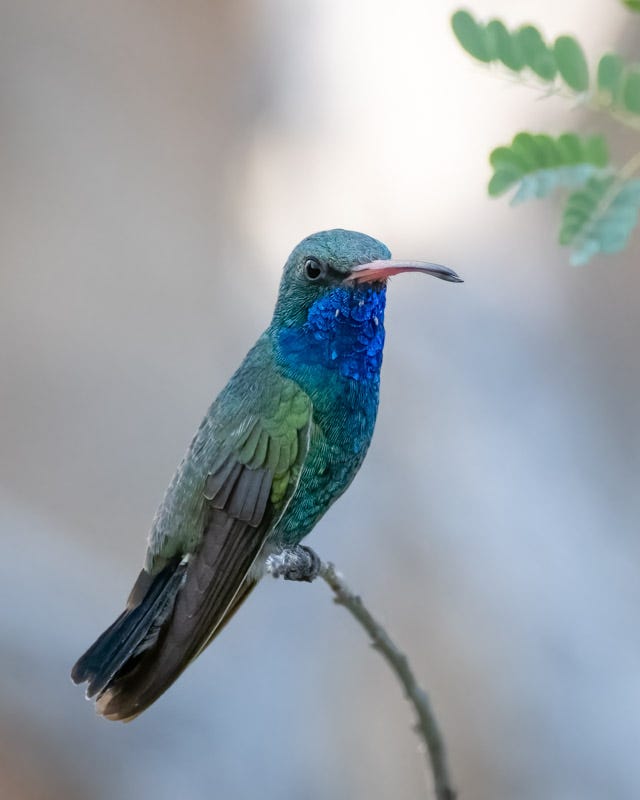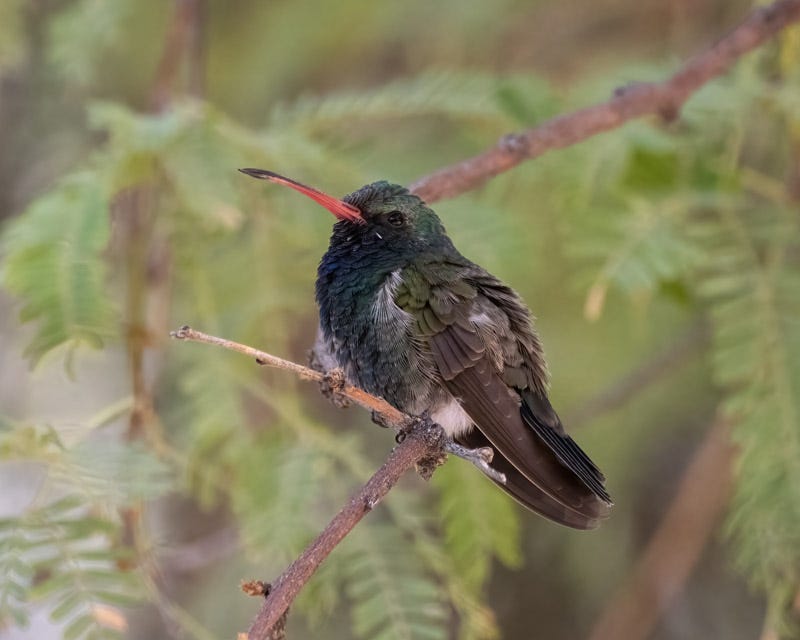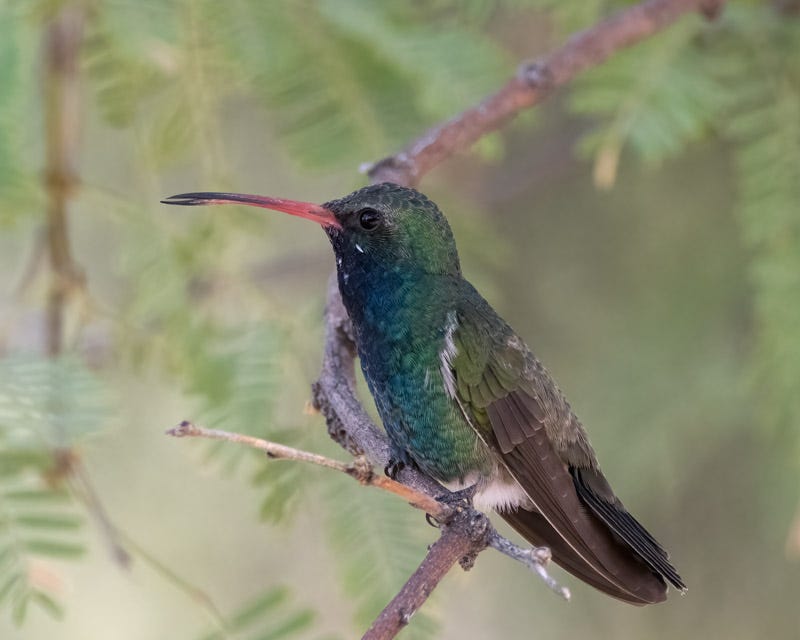The End of a Hummingbird's Tale
Oct. 14, 2024: Did the hummingbird ever regrow his tail?
For almost two weeks I continued looking for the Broad-billed hummingbird with the missing tail feathers. At times, it almost seemed as if it understood my interest. Still, it never revealed its secret. How did he lose its tail feathers and would they ever grow back?
Although I didn't look for it daily, I did look intentionally very regularly. On September 29th, long after I first noticed it preening, I was surprised to see something! There were definitely tail feathers growing in!! They seemed to be growing in all at once rather than the normal one-pair-at-a-time!
For a bird whose tail feathers should be longer than its wing feathers, it was coming up short.
The Broad-bill continued to be very physically active, flying rapidly and aggressively towards any other hummingbird that came near "its" two feeders. Because it was so aggressive, it never seemed to use perches tucked deeply into vegetation. It most often seemed to use perches that were out in the open, with clear attack paths towards the feeders.
Two days later and the feathers seemed to be growing in.
Again, all bird behavior was normal. I'm not sure why hummingbirds will often stick their tongues out after they have fed. Perhaps they are getting one last squeeze or sip of nectar. For information on how hummingbird tongues work, see https://www.audubon.org/news/video-hummingbirds-are-groove-tongued-wonders
And the tail feathers kept on growing day by day.
By October 6, the feathers almost reached the tip of the Broad-bill's wings.
The next day, on October 7, they had reached the tip of the wings.
Two days later the hummingbird looked almost 'normal'. It roused and put all of its feathers in place during this shot. That made it look plump.
My final shot in this series shows the tail feathers beginning to stretch beyond its wing tips. I felt it would be tough to continue to differentiate this fellow from other hummingbirds so I quit looking for it to take pictures.
I did feel good knowing that all of its tail feathers did grow back, no matter the cause of them all being gone at once. The bird was not too injured to grow his feathers back and it was nice to see a bird survive even when it was presented with a bad situation.


